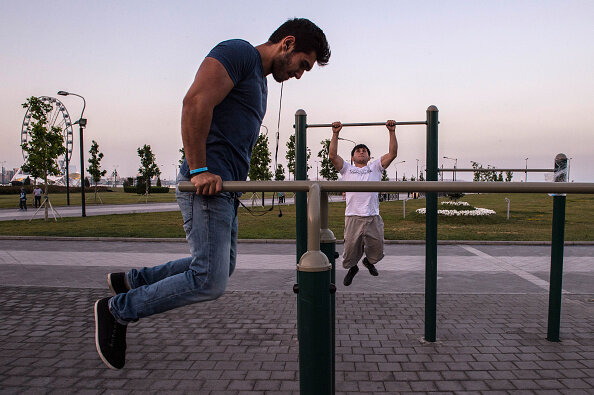Can you build muscle without going to the gym? The answer is a resounding yes! All you need is the right workout plan and adherence to key principles. In this article, I’ll share the secrets to building muscle at home, which will help you achieve impressive results without complicated equipment. Achieving muscle growth in the comfort of your own home is absolutely possible if you approach it with discipline and intelligence.
Why Home Workouts Can Be Just as Effective.
The main advantage of home workouts is convenience. You don’t have to spend time commuting to the gym, and you save money on memberships and equipment. However, to achieve great results, you must follow a structured workout plan and gradually increase the intensity of your exercises. Plus, working out at home lets you choose the most convenient time for your schedule and fully tailor the sessions to fit your lifestyle.
Secrets to Building Muscle at Home: Key Principles.
If you want to know how to effectively build muscle at home, there are several important factors you need to understand:
- Progressive Overload. Muscles grow when the load on them gradually increases. Even if you’re training without equipment, there are plenty of ways to ramp up the intensity.
- Nutrition. Without adequate protein intake, muscles won’t grow. You need to ensure you’re eating protein-rich foods such as eggs, chicken, fish, and cottage cheese.
- Rest and Recovery. Muscles repair and grow during rest. Lack of sleep and excessive training can slow down your muscle growth progress.

Top Exercises to Build Muscle at Home.
To train effectively at home, you don’t need access to specialized equipment. Bodyweight exercises and simple movements can be just as effective. Here’s a workout routine that will help you build muscle:
Squats
Squats are a foundational exercise for your legs and glutes. To increase the challenge, use dumbbells, weighted vests, or try one-legged squats (pistol squats).
Push-Ups
Push-ups are one of the best exercises for your upper body. Variations such as narrow-grip push-ups for your triceps or wide-grip push-ups for your chest will help you progress
Pull-Ups
Pull-ups are essential for building your back and biceps. For muscle growth, aim to increase the number of repetitions or use weights for added resistance.
Planks
Planks are a core exercise that strengthens your abs and core muscles. Regularly performing planks helps improve endurance and overall core stability.
Lunges
Lunges are excellent for working your legs and glutes. You can increase the intensity by holding weights or adding more repetitions to your sets.

How to Increase Intensity at Home.
Progressive overload is crucial for building muscle at home. Here are a few ways to make your home workouts more challenging:
- Increase repetitions. Gradually add more reps to each exercise to push your muscles further.
- Add weight. Use a backpack filled with books, water bottles, or other household items to create extra resistance.
- Resistance bands. These are affordable and effective tools for adding resistance to bodyweight exercises.
- Adjust your angles. Modify the positioning of your body to target different muscle groups, like doing decline push-ups with your feet elevated.
Nutrition for Muscle Growth: How to Plan Your Diet.
Building muscle is not just about workouts; it’s also about proper nutrition. You need to ensure you’re consuming enough protein—around 1.5–2 grams per kilogram of body weight. Include these foods in your diet:
- Chicken — a great source of high-quality protein.
- Cottage cheese and eggs — affordable and nutrient-rich options for muscle growth.
- Oatmeal and quinoa — slow-digesting carbs that provide sustained energy.
- Nuts and avocados — healthy fats that are essential for maintaining hormonal balance.

Recovery: The Importance of Rest for Muscle Growth.
Rest and recovery are just as important as your workouts. Muscles grow during rest, not during training. If you’re sleep-deprived or overtraining, your progress may slow down. Aim for 7–8 hours of sleep per night and allow sufficient recovery time between workouts. Incorporate rest days into your routine to prevent overtraining and fatigue.
Mental Preparation and Motivation.
Home workouts require discipline and self-motivation. It’s essential to establish a clear workout schedule and stick to it. To stay motivated, track your progress, take photos of your improvements, and monitor your results. Mental focus is just as crucial as physical effort, especially when you’re training solo.
Conclusion
In summary, the secrets to building muscle at home are simple and accessible to anyone: consistent workouts, proper technique, balanced nutrition, and adequate recovery. You don’t need to visit a gym to achieve your fitness goals. All you need is discipline, motivation, and the will to follow a few straightforward rules. By gradually increasing your workout intensity and maintaining a healthy diet, you will undoubtedly see positive changes in your body.


